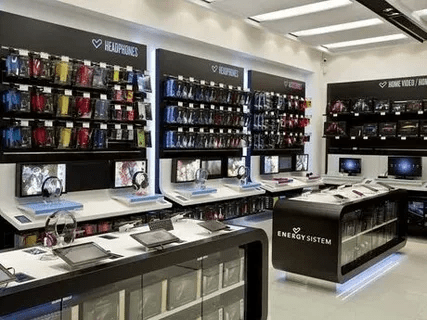In today’s fast-paced digital world, mobile apps have become integral to daily life. However, the success of any app is determined by how effectively it meets user needs, and a key factor in achieving this is its user interface (UI) design. A well-designed UI not only looks appealing but also ensures a seamless and intuitive user experience (UX).
In this article, we’ll explore the principles and best practices for crafting intuitive mobile app UIs that captivate users and drive engagement.
The Importance of Intuitive UI Design
An intuitive UI is one that users can navigate effortlessly, even on their first interaction. Such designs minimize confusion, reduce learning curves, and encourage continued use.
Why It Matters
- Retention and Loyalty: Apps with intuitive UIs keep users engaged and loyal over time.
- Higher Conversion Rates: Simpler navigation encourages actions like sign-ups or purchases.
- Positive First Impressions: Users form judgments about your app within seconds, making the initial design crucial.
1. Prioritize User-Centric Design
The foundation of intuitive UI lies in understanding your audience.
Key Steps
- User Research: Conduct surveys, interviews, and usability testing to understand user pain points and preferences.
- Personas: Create user personas to represent different audience segments.
- Context of Use: Consider the environments in which users will interact with your app (e.g., on the go or at home).
Example: Duolingo’s app design reflects its understanding of users’ needs for bite-sized, gamified language lessons.
2. Keep Navigation Simple and Clear
Users should be able to find what they need without frustration.
Best Practices for Navigation
- Use Familiar Patterns: Stick to standard layouts like bottom navigation bars or hamburger menus for consistency.
- Limit Choices: Avoid overwhelming users by keeping navigation options concise.
- Highlight the Current Page: Use visual cues like icons, colors, or underlines to indicate the active page.
Pro Tip: Ensure primary actions are accessible within one or two taps.
3. Leverage Visual Hierarchy
Visual hierarchy helps guide users’ attention to the most important elements.
Techniques
- Size and Contrast: Use larger fonts or bold colors for primary actions like CTAs.
- Spacing and Alignment: Group related items together and maintain alignment for a clean layout.
- Progress Indicators: In multi-step processes, provide clear progress indicators to reduce user anxiety.
Example: Food delivery apps like DoorDash use bold visuals for menu items and smaller fonts for secondary information.
4. Consistency is Key
Consistency across the app ensures users feel familiar with its layout and functionality.
How to Maintain Consistency
- Reusable Components: Use consistent button styles, icons, and color schemes.
- Design Systems: Create or adopt a design system like Material Design or Apple’s Human Interface Guidelines.
- Global Navigation: Keep menu placements and actions consistent across all screens.
Pro Tip: Test your app across different devices to ensure visual consistency.
5. Optimize for Mobile-Specific Interactions
Mobile apps require designs tailored to touch interactions.
Mobile-Optimized Tips
- Touchable Targets: Ensure buttons and interactive elements are large enough for easy tapping.
- Gestures: Incorporate intuitive gestures like swiping, pinching, or long-pressing.
- Feedback: Provide immediate visual or haptic feedback for user actions.
Stat: Over 75% of users prefer apps with touch-optimized UIs.
6. Adopt Minimalist Design Principles
Simplicity enhances usability by reducing cognitive load.
Elements of Minimalism
- Whitespace: Use ample spacing to declutter interfaces.
- Essential Features Only: Avoid overloading users with unnecessary functionalities.
- Flat Design: Prioritize flat or semi-flat design trends for clean, modern aesthetics.
Example: Instagram’s minimalist interface focuses on core user actions like posting, scrolling, and messaging.
7. Use Micro-Interactions Thoughtfully
Micro-interactions are subtle animations or visual cues that provide feedback and enhance usability.
Examples of Micro-Interactions
- Button Animation: A button changes color when tapped.
- Pull-to-Refresh: A spinning animation when refreshing a feed.
- Completion Feedback: A checkmark appears after a successful action.
Tip: Keep micro-interactions subtle and aligned with the app’s personality.
8. Emphasize Accessibility
Designing for inclusivity ensures that all users, including those with disabilities, can use your app effectively.
Accessibility Features
- Screen Reader Compatibility: Include descriptive labels for buttons and icons.
- Adjustable Text Size: Allow users to resize text based on their needs.
- Colorblind-Friendly Palettes: Use color schemes that accommodate color vision deficiencies.
Stat: Apps designed with accessibility in mind have a 25% higher user satisfaction rate.
9. Prioritize Speed and Performance
Slow-loading apps frustrate users and lead to uninstalls.
Performance Optimization Tips
- Optimize Images: Use formats like WebP to reduce file sizes.
- Load Content Incrementally: Display key elements while other parts load in the background.
- Monitor App Size: Keep your app lightweight to save device storage.
Example: TikTok’s seamless video loading ensures smooth user experiences even on slower networks.
10. Continuously Test and Iterate
User needs evolve, and so should your app design.
Testing Methods
- A/B Testing: Experiment with different layouts or CTAs to determine what works best.
- Heatmaps: Analyze where users click or tap most frequently.
- User Feedback: Regularly collect and act on user reviews or surveys.
Tip: Use analytics tools like Firebase or Hotjar to monitor app performance and user behavior.
Conclusion
Creating an intuitive mobile app UI is a blend of artistry and data-driven decision-making. By prioritizing user needs, maintaining simplicity, and embracing accessibility, you can design apps that not only meet but exceed user expectations.
Remember, an app’s UI is the first impression users have of your brand. Crafting it thoughtfully will lead to higher engagement, better retention, and ultimately, a successful product in the competitive app marketplace.
Devoq Design is a premier UI/UX design agency with a strong presence in both Mohali and Kanpur. Renowned for their innovative and user-centric approach, Devoq Design specializes in creating seamless and engaging digital experiences. As a leading UI/UX Design Agency in Mohali, they cater to a diverse range of industries, ensuring each project is tailored to meet the specific needs of their clients. Similarly, as a top UI/UX Design Agency in Kanpur , Devoq Design combines cutting-edge technology with creative expertise to deliver exceptional results that drive business growth and user satisfaction.









































































































































































































































































































































































































































































































































































































































































































































































































































































































































































































































